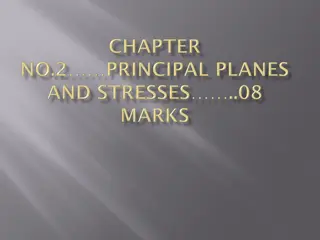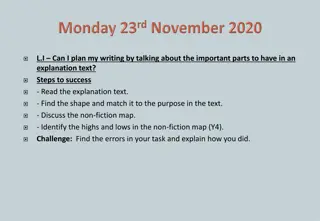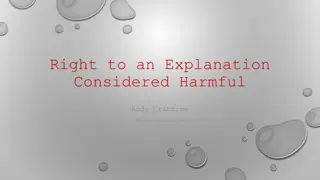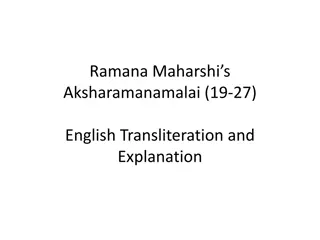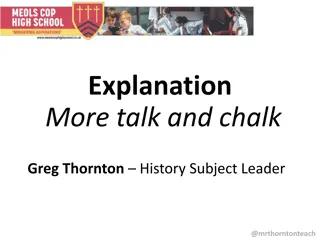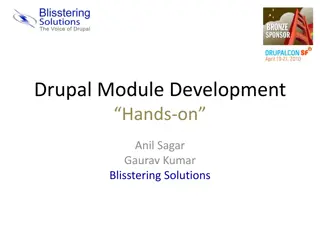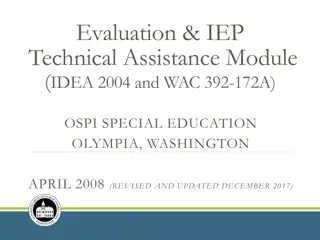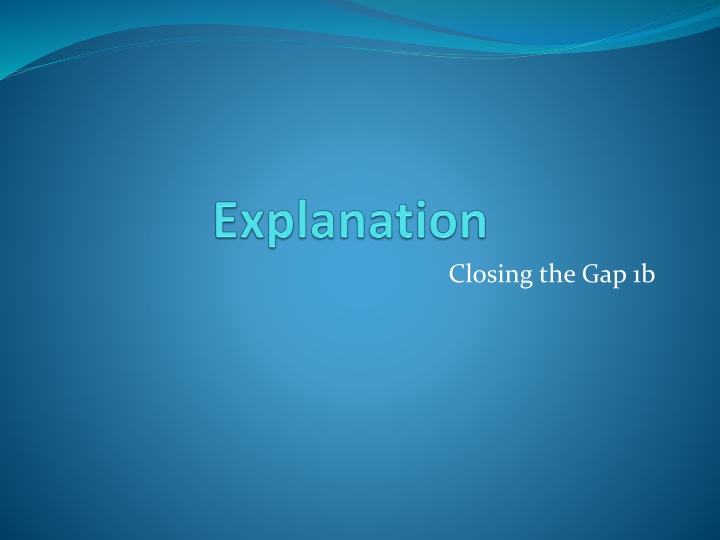
Effective Communication Strategies in Patient Explanations
Enhance patient understanding through bidirectional communication, avoiding medical jargon, and tailoring explanations to patient needs. Evidence supports improved retention, satisfaction, and reduced complaints. Techniques include signposting, checking understanding, and building explanations on existing knowledge.
Download Presentation

Please find below an Image/Link to download the presentation.
The content on the website is provided AS IS for your information and personal use only. It may not be sold, licensed, or shared on other websites without obtaining consent from the author. If you encounter any issues during the download, it is possible that the publisher has removed the file from their server.
You are allowed to download the files provided on this website for personal or commercial use, subject to the condition that they are used lawfully. All files are the property of their respective owners.
The content on the website is provided AS IS for your information and personal use only. It may not be sold, licensed, or shared on other websites without obtaining consent from the author.
E N D
Presentation Transcript
Explanation Explanation is not doctor centred Bidirectional Avoid medical jargon Explain things adequately Cover anything else patient wants to know Check they have understood everything
Evidence Explanation Teaching and Learning Communication skills in medicine Kurtz, Silverman, Draper;2ndedition Pages 14-20 Checking Understanding - improves retention by 30% (Bertakis 77) Categorisation, summarisation, signposting, diagrams, clarity all increase recall (Ley 88)
Evidence While I am here is reduced Patient satisfaction increased Complaints reduced Litigation reduced (discount on MDU in USA) Information retention improved Concordance improved Consultation shortened! (Levinson 2000)
What makes a good explanation? Check it is wanted Provide correct amount and type of information Aids Recall and Understanding
What makes a good explanation? Provides Correct amount and Type Information Baseline Knowledge Appropriate Language Chunk and Check Aids Recall and Understanding Organises explanation logically Signposts (there are three things ..) Repeats for emphasis Summarise Check Understanding
Explanation 1 - Signposting Suggest you are going onto the explanation bit State your diagnosis briefly Is it ok for me to explain what is going on Then you can tell me how you feel about it From what you have told . 1. 2. 3. Next, DON T continue with the explanation of diagnosis PAUSE for a few seconds -let the diagnosis sink in
Explanation 2 identify patient s starting point Have you heard about it? What does it mean to you? Have you read about it? Maybe someone you know has it? Yes, I know about it Explore how much the patient knows.
Explanation 3 Build on what the patient already knows First confirm what the patient has said is right and correct which is not. Weaving Try and use what the patient said you are right , like you said Flexibility Be flexible in your explanation. Keep checking what the patient knows so you can continue to build on that.
Explanation 3 - continued Weaving Try and incorporate the patient s health beliefs in your explanation. You need to remember the ideas, concerns raised in the early part of the consultation. For patients to accept your diagnosis, you need to start with their perception. If both your thoughts are different you have to explain why you don t think it is .. ( ex. Not angina, it is MSK, antibiotics not needed for viral infection ) 1. 2. 3.
Explanation 4 Help the patient remember what is being said How much do they want to know? Eg : diabetes Chunking When there is a lot of information and you need a structure First, what is diabetes How we can work together Third the complications Repetition and Summarising Recap 1. 2. 3.
Checking understanding Check patient has understood everything Check two things: They have understood the diagnosis/explanation 1. 2. They have understood the management plan Two key elements to do it successfully : Explore the patient s understanding of the diagnosis/treatment 1. 2. Giving a reactive explanation of the understanding or treatment.







